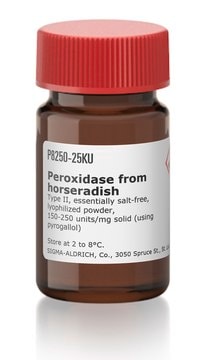A4108
Aminophenyl fluorescein solution
5 mM in DMF, suitable for fluorescence
Sinonimo/i:
2-[6-(4′-amino)phenoxy-3H-xanthen-3-on-9-yl]benzoic acid solution, APF solution
Scegli un formato
About This Item
Prodotti consigliati
Stato
liquid
Concentrazione
5 mM in DMF
Compatibilità
suitable for fluorescence
Temperatura di conservazione
2-8°C
Categorie correlate
Descrizione generale
Fluorescence intensity increases after reaction with hROS (e.g. hydroxy radical, peroxynitrite and hypochlorite). And, APF is resistant to light-induced autoxidation.
Applicazioni
Avvertenze
Danger
Indicazioni di pericolo
Classi di pericolo
Acute Tox. 4 Dermal - Acute Tox. 4 Inhalation - Eye Irrit. 2 - Flam. Liq. 3 - Repr. 1B
Codice della classe di stoccaggio
3 - Flammable liquids
Classe di pericolosità dell'acqua (WGK)
WGK 2
Punto d’infiammabilità (°F)
135.5 °F - closed cup
Punto d’infiammabilità (°C)
57.5 °C - closed cup
Dispositivi di protezione individuale
Eyeshields, Faceshields, Gloves, type ABEK (EN14387) respirator filter
Scegli una delle versioni più recenti:
Certificati d'analisi (COA)
Non trovi la versione di tuo interesse?
Se hai bisogno di una versione specifica, puoi cercare il certificato tramite il numero di lotto.
Possiedi già questo prodotto?
I documenti relativi ai prodotti acquistati recentemente sono disponibili nell’Archivio dei documenti.
I clienti hanno visto anche
Active Filters
Il team dei nostri ricercatori vanta grande esperienza in tutte le aree della ricerca quali Life Science, scienza dei materiali, sintesi chimica, cromatografia, discipline analitiche, ecc..
Contatta l'Assistenza Tecnica.












